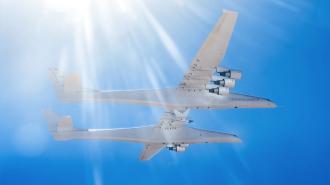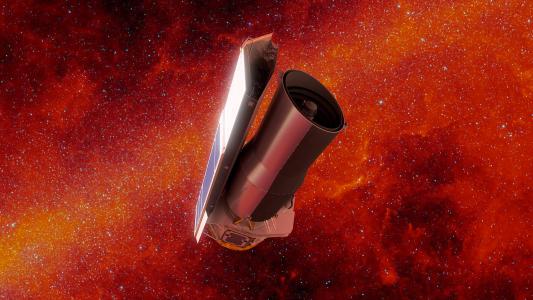Aerospace company Stratolaunch is now a major step closer to helping develop the hypersonic aircraft of the future — including next-gen weapons for the US military.
Faster flight: Hypersonic weapons are incredibly fast, highly maneuverable, and hard to defend against. They’re also incredibly difficult and expensive to develop — over the past 20 years, the US has tried and given up many times.
Now that Russia and China are pulling ahead in the race to develop usable hypersonic weapons, America is once again all-in on the tech — and this time could be different, thanks to Stratolaunch.
“Today’s test was exceptional.”
Zachary Krevor
The idea: To facilitate the development of hypersonic aircraft — including weapons — Stratolaunch built a massive airplane, Roc, to carry hypersonic vehicles high into the sky and then drop them.
From there, the hypersonic aircraft can fire up their engines at higher altitude, in a thinner atmosphere. This technique — called “air launching” — conserves fuel and is less complicated than trying to get a hypersonic vehicle to take off from the ground.
What’s new? Stratolaunch is also developing its own fully reusable hypersonic aircraft, Talon-A, that customers could use to conduct hypersonic experiments and test instruments, and on May 13, it announced that it had dropped a Talon test vehicle, TA-0, from Roc for the first time.
“Today’s test was exceptional,” said CEO Zachary Krevor. “It was exhilarating to see TA-0 release safely away from Roc, and I commend our team and partners.”
Looking ahead: The TA-0 didn’t accelerate to hypersonic speeds after separating from Roc, but Stratolaunch expects to conduct a hypersonic test with an expendable version of Talon, TA-1, late in the summer this year.
“Our hardware and data collection systems performed as anticipated, and we now stand at the precipice of achieving hypersonic flight,” said Krevor.
We’d love to hear from you! If you have a comment about this article or if you have a tip for a future Freethink story, please email us at [email protected].






